Men with Wings
Cast & Crew
William A. Wellman
Fred Macmurray
Ray Milland
Louise Campbell
Andy Devine
Lynne Overman
Film Details
Technical Specs

Synopsis
Reporter Nicholas Ranson is jubilant when, on 17 Dec 1903, in Kitty Hawk, North Carolina, Orville and Wilbur Wright take their first airplane flight. Back home in Underwood, Maryland, however, his uncle Hiram F. Jenkins, owner and editor of the local newspaper, refuses to print the story. Nicholas quits and continues to work on his own airplane, with the devoted help of his little daughter Peggy. Peggy is actually the first in her family to fly when her friends, Patrick Falconer and Scott Barnes, induce her to get inside a large kite they have made, and run with it in a field until she is airborne. The kite is caught in a tree, however, and Peggy gets a black eye. Later, Nicholas dies when his experimental airplane crashes, leaving his wife and children alone. By Peggy's adulthood, planes are capable of flying at an altitude of 11,000 feet, and speeds of nearly 100 m.p.h. Peggy continues her father's obsession with flight by helping Scott and Pat to build a plane. Airplane manufacturer J. A. Nolan hires Scott to design plans and Pat to build them. The three aviation pioneers finally quit their jobs as reporters when Uncle Hiram decides to overshadow their breaking of the current speed record with news of the assassination of Archduke Ferdinand. Pat becomes bored by regular work, however, and is fired for instigating a fight. He enlists in the Army Air Corps, which is fighting in France. Peggy's love for the headstrong and unreliable Pat grows, but during his absence, she relies heavily on the friendship of Scott, who is in love with her. Peggy joins the war effort and is sent to France, where she is reunited with Pat, who is a decorated hero, and by Armistice Day, they are married. Enlisted by the Army, Scott continues to build better planes, helped by mechanic Joe Gibbs and, when risking his life testing one of them, breaks his legs. Still in two casts, he leaves the hospital early and sneaks back to perform some additional test flying of the rebuilt airplane. Scott is transferred by the Army to pilot mail between New York and Washington, D.C. Pat and a pregnant Peggy return home upon the death of his father. Bored and restless, Pat moves to New York. After Peggy gives birth, Pat joins up to fight a war in Morocco with some old flying buddies, without saying goodbye to his wife, and asks Scott to take care of his family. On the day that Scott completes the first non-stop transcontinental mail flight from New York to San Francisco, an injured Pat singlehandedly wins the war in Morocco and steals the headline in Uncle Hiram's paper. Pat returns home with a lame leg and, with the help of Scott, founds Falconer Airplanes, Inc. in California. After five years, Pat again becomes restless and is determined to break a world's record by flying non-stop from New York to Paris. Although Scott adapts a new plane for him, Pat resists learning the new technology and begins the flight from California without proper knowledge of the plane's instrumentation. He misses the New York landing and, as he runs out of fuel, crashes in the ocean. Fortunately, Scott and Joe rescue Pat just before his plane sinks, and they return to the airfield as Charles Lindbergh is departing for Paris in his "Spirit of St. Louis." The Depression hits the airline manufacturing business hard, and as Pat has suddenly left for China, Peggy offers financial assistance so Scott can keep one hangar open to build a new military airplane. Soon, Uncle Hiram and his assistant, Hank, also donate their savings after having sold the newspaper. Scott finally test flies his plane against the standard Army biplanes and outflies them, clearly making every other type of military plane obsolete. In 1938, Pat dies during aerial combat on his last mission in China, and Scott brings news of his death to Peggy on the eve of the "Falconer Bomber's" fifth anniversary. Peggy stoically attends the elegant anniversary banquet, and after Scott is honored for his achievements, she eulogizes Pat.

Director

William A. Wellman
Cast

Fred Macmurray

Ray Milland
Louise Campbell
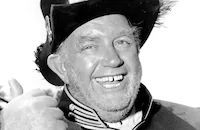
Andy Devine
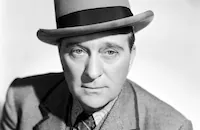
Lynne Overman
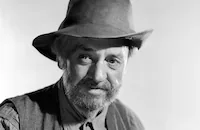
Porter Hall

Walter Abel
Kitty Kelly

Virginia Weidler
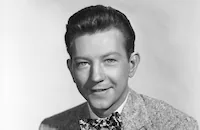
Donald O'connor
Billy Cook

James Burke
Willard Robertson

Richard Stanley
Frank Clarke
Dorothy Tennant
Helen Dickson
Lillian West
Grace Goodall
Charles Williams
Norah Gale
Dorothy White
Dolores Casey
Sheila Darcy
Kitty Mchugh

Evelyn Keyes
Jane Dewey
Jean Fenwick
Cheryl Walker
Jack Hubbard

Juanita Quigley
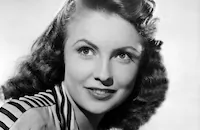
Joan Brodel
Mary Brodel
Charles Trowbridge

Jonathan Hale
Archie Twitchell
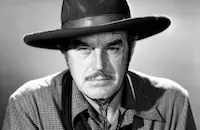
Harry Woods
Jack Chapin
Joe Whitehead
Pat West
David Newell
Charles Hamilton

Lee Phelps
Ronnie Rondell
Frank Mills
Eddie Dunn
Edward Earle
John T. Murray
Dell Henderson
Claire Du Brey
Willy Morris
Billy Bletcher
Syd Saylor
Lu Miller
Art Rowlands
Ralph Mccullough
Garry Owen
Bobby Tracy
James Burtis
Jerry Storm
Paul Kruger
Al Hill
George Chandler
Franklin Parker
Sherry Hall
Robert E. Perry

Russell Hicks
Ruth Rogers
Anita Randalla Berkely
Ethel Clayton
Crew
Eddie Angel
Jim Barton
Howard Batt
A. J. "duke" Callahan
Gerard Carbonara
Hoagy Carmichael
Robert Carson
Frank Clarke
Wilfrid Cline
Zoila Conan
John Cope
Hans Dreier
Farciot Edouart
A. E. Freudeman
Earl Gordon
W. Howard Greene
John Hamilton
W. Franke Harling
Edith Head
Paul Hill
Henri Jaffa
Gordon Jennings
Natalie Kalmus
Al Lary
William Lebaron
Garland Lincoln
Frank Loesser
Paul Mantz
Paul Mantz
Charles Marshall
Gene Merritt
Boris Morros
Robert Odell
Ted Oviat
Gladys Percey
Tex Rankin
Dick Rinaldi
Thomas Scott
William A. Wellman
William A. Wellman
Joseph Youngerman
Adolph Zukor

Film Details
Technical Specs

Articles
Donald O'Connor, 1925-2003
Born Donald David Dixon O' Connor in Chicago on August 28, 1925, he was raised in an atmosphere of show business. His parents were circus trapeze artists and later vaudeville entertainers, and as soon as young Donald was old enough to walk, he was performing in a variety of dance and stunt routines all across the country. Discovered by a film scout at age 11, he made his film debut with two of his brothers in Melody for Two (1937), and was singled out for a contract by Paramount Pictures. He co-starred with Bing Crosby and Fred MacMurray in Sing, You Sinners (1938) and played juvenile roles in several films, including Huckleberry Finn in Tom Sawyer - Detective (1938) and the title character as a child in Beau Geste (1939).
As O'Connor grew into adolescence, he fared pretty well as a youthful hoofer, dancing up a storm in a string of low-budget, but engaging musicals for Universal Studios (often teamed with the equally vigorous Peggy Ryan) during World War II. Titles like What's Cookin', Get Hep to Love (both 1942), Chip Off the Old Block and Strictly in the Groove (both 1943) made for some fairly innocuous entertainment, but they went a long way in displaying O'Connor's athletic dancing and boyish charm. As an adult, O'Connor struck paydirt again when he starred opposite a talking mule (with a voice supplied by Chill Wills) in the enormously popular Francis (1949). The story about an Army private who discovers that only he can communicate with a talking army mule, proved to be a very profitable hit with kids, and Universal went on to star him in several sequels.
Yet if O'Connor had to stake his claim to cinematic greatness, it would unquestionably be his daringly acrobatic, brazenly funny turn as Cosmo Brown, Gene Kelly's sidekick in the brilliant Singin' in the Rain (1952). Although his self-choreographed routine of "Make "Em Laugh" (which includes a mind-bending series of backflips off the walls) is often singled out as the highlight, in truth, his whole performance is one of the highlights of the film. His deft comic delivery of one-liners, crazy facial expressions (just watch him lampoon the diction teacher in the glorious "Moses Supposes" bit) and exhilarating dance moves (the opening "Fit As a Fiddle" number with Kelly to name just one) throughout the film are just sheer film treats in any critic's book.
After the success of Singin' in the Rain, O'Connor proved that he had enough charisma to command his first starring vehicle, opposite Debbie Reynolds, in the cute musical I Love Melvin (1953). He also found good parts in Call Me Madam (1953), There's No Business Like Show Business (1954), and Anything Goes (1956). Unfortunately, his one attempt at a strong dramatic role, the lead in the weak biopic The Buster Keaton Story (1957) proved to be misstep, and he was panned by the critics.
By the '60s, the popularity of musicals had faded, and O'Connor spent the next several years supporting himself with many dinner theater and nightclub appearances; but just when it looked like we wouldn't see O'Connor's talent shine again on the small or big screen, he found himself in demand at the dawn of the '90s in a string of TV appearances: Murder She Wrote, Tales From the Crypt, Fraser, The Nanny; and movies: Robin Williams' toy-manufacturer father in Toys (1992), a fellow passenger in the Lemmon-Matthau comedy, Out to Sea (1997), that were as welcoming as they were heartening. Survivors include his wife, Gloria; four children, Alicia, Donna, Fred and Kevin; and four grandchildren.
by Michael T. Toole

Donald O'Connor, 1925-2003
Quotes
Trivia
Notes
A 1936 Los Angeles Times news item announced that Jeff Lazarus, head of the Paramount editorial staff, came up with the idea for this film, and noted that Donald Douglas of the Douglas Aircraft Company would act as technical advisor. Further, the Los Angeles Times article noted that Paramount hoped to enlist the help of Charles Lindbergh. The contributions of Lazarus, Douglas and Lindbergh to the final film have not been confirmed. A pre-production news item in Hollywood Reporter noted that Cary Grant and Randolph Scott were originally considered for leading roles. Los Angeles Times reported the following cast assignments for this film: Carole Lombard, George Raft, Frances Farmer, Sir Guy Standing, Akim Tamiroff and Jackie Moran. None of these actors, however, appeared in the final film. New York Times notes that twenty stunt pilots, all members of the Association of Motion Picture Pilots, were paid fifty dollars per day to fly in this production. The pilots listed above were the only names credited in contemporary sources. An article in New York Times claims that Dr. Irving Krick, Professor of Aeronautics at Cal Tech, was hired by Paramount to detect weather conditions and in particular, to find clouds. The plot synopsis in the pressbook ends with "Pat" returning from China for the company anniversary celebration. After he sees "Scott," "Peggy" and "Patricia" together, he sacrifices his own happiness for theirs, and leaves unnoticed. According to an article in New York Times, Paramount rewrote the end of the film at the request of the U.S. government, in order to "eliminate the note of pacifism on which the picture had intended to end." The article notes that at the celebration, Peggy speaks against the use of airplanes for the purposes of war. Modern sources dispute that the government was involved in the decision. The press book notes that pilot and technical advisor Paul Mantz was also technical advisor to Amelia Earhart. The pressbook, contemporary news items and modern sources list the planes that were collected for use in this film as follows: Fokker D. VII, DeHavilland-Liberty, Hispano-Suiza Spad, Nieuport, Phalz D. XII, Thomas-Morse Scout, British S.E.V., J5 Lockheed and others. According to an ad in Motion Picture Herald, the film's budget was over $2,000,000. Special screenings included a premiere in Times Square, during which several pilots received "Men with Wings" awards, and a screening in Fort Wayne, IN on Armistice Day. The Film Guide lists the following California shooting locations: Canoga Park; Calabasas; Metropolitan Airport in Van Nuys; California National Guard Airport at Griffith Park in Glendale; Union Air Terminal, Burbank; Hangar 5 at Los Angeles Municipal Airport; Highland Park; Port Hueneme; Saugus; Mojave Desert; Imperial Valley; San Diego; and Santa Barbara. Modern sources note that the film was in production for nine months, four months of which were used to shoot the flying scenes. Modern sources claim that Wellman's 1958 film Lafayette Escadrille used footage from Men with Wings.














